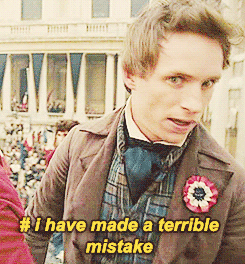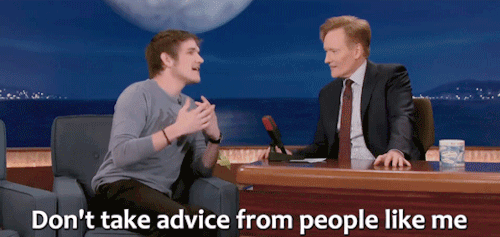How I Wrote A Novel.
How I Wrote A Novel.
This, in a nutshell, is what I did to get a book with my name on it.
NOTE: This is just my personal way of making the words go. Other people have different ways to make their words go. In the world of words, there are no right answers. There’s just lots and lots of tea/coffee/tear stains.
1). The Idea
When I get an idea for a story, I open up a document, label it “Brainstorming,” and start making a bullet list of events that consist of the plot.

It has to be an idea with tangible weight. A stray bit of dialogue or something vague like Halloween, that doesn’t give me much to work off of. Halloween creatures living on the same street where it’s Autumn every day- now that’s something I can build from.
What kinds of creatures are they? What do they do? What do their houses look like? The best ideas are the ones that spark more.
2). First Draft

This is the easy part- and the most challenging. Easy, because there’s literally no bar. I just sat there and typed. But it’s a huge mental challenge.
When I was in first draft mode, I wanted that story out. I thought that by making it such a rough, far-away version from the concept in my head, I was only delaying the day where I’d hold it in my hands. Turns out, that’s what got it to take on physical form in the first place. So I quieted down, grabbed my laptop and some hot tea, and typed.
3). Dissecting the First Draft

After I finished draft one, I printed it all off and highlighted the scant amounts that were passable for the next phase. Dialogue, descriptions, setting- anything that didn’t look like it was up to par was scratched out and omitted.
I call the above pictures A Slow Descent Into Madness.
4). The Second Draft

On a fresh document, I rewrote the story altogether- and it make a difference. I was coming up with things I hadn’t even thought of previously. And it was surprising how much better the plot was than the first time around. But it was still rough.
5). Draft Three

My method was to start with the bigger, more obvious issues and work my way down. Any plot holes I found were noted, and my outline was constantly under revision. I cut out entire scenes and made mental notes on ways they could be fixed/replaced.
This is where I started cutting chapters in half to make the story flow better- but I didn’t bother writing in usable chapter titles. Instead, I improvised:
6). Drafts Four and Five

These were dedicated to correcting the smaller, less obvious plot holes. This was the point where the story finally started to look close to what would become the final version.
7). Drafts Seven Onward

With the story line looking how I wanted, I then moved on to sentence structure. That one song that looked terrible? Rewritten. Over-the-top descriptions and excessive prose? Gone.
8). Editing and Proofing
This is where I had outside help. Besides this useful tool, I had two people check for spelling issues and the overall story. Once it was in decent shape to be made public, I asked for some additional help.
9). Betas
My betas were in the age range that my novel was geared toward, along with a couple of teachers and parents (as it was middle grade). I gave them the full manuscript, along with seven basic questions like “Which characters were your favorite/least favorite and why?” and “Was there a part of the story that didn’t make sense?”
I gave my betas three months to read a 42,590 word story, and by the end they gave me back the review sheets.
10). Final Adjustments
After I read over the reviews, I let the comments sit for three days so that I could proceed with a clear head. I smoothed out any flaws, scanned over the MS twice to make sure everything was right, and that is how I got to the end of writing my first novel.
Next comes publishing- which is a different beast entirely.
More Posts from Nasenaya and Others
Finishing Voltron s8

twitter etiquette for new users
replying is how you make friends! reply to anything you want and be friendly. don’t make rude jokes if you’re not friends already though!
quote retweeting is a no-no. when you “retweet with a comment” it’s not liked by content creators because it makes a new tweet out of their tweet and they don’t get the likes and retweets they would get if you’d just retweeted it straight up. if you want to comment on a retweet, reply to it or post a new tweet starting with “LRT” which stands for “last retweet” (it’s fine to quote retweet dumb memes and so on.)
you can make your tweets private. this means no one but your followers will be able to see what you post and no one will be able to retweet your content. you can switch back and forth between private and public at will. some people make a separate private account to tweet personal stuff and let mutuals follow it only. it’s a good way to keep things separate.
what is privatter? privatter is a third party web app that content creators can allow to be attached to their twitter. it lets them tweet content that they can make exclusive to logged in users, followers, mutuals, or a specific list of users. as long as you are logged in to twitter and fall into the intended category, you’ll be able to see it.
you can mute people you follow. (and those you don’t, ofc.) you can also mute words and phrases and entire conversations. if you mute someone you follow and they reply to you, that reply will still show up in your notifications. it’s a good way to keep the peace!
you can limit notifications to people who follow you or to mutuals. (notifications from people you follow will still show up regardless of which option you’ve selected.)
miscellaneous tips and warnings: if you accidentally unfollow and refollow someone, it won’t show up in their notifications as long as it’s within a couple minutes. no more accidental stuff. everyone can see who everyone follows so watch out. people will know if you unfollow. if you want to report someone and want them gone forever, report a tweet where they used a curse word. screenshotting tweets for harassment is a no-no and can get you banned. don’t be lame. don’t be a dick. vaguing others is generally really bad form and so is complaining about content within a fandom you’re in. use the mute tools at your disposal and don’t be a spoiler. you won’t come back from a rep like that and everyone sees everything.
that’s it! happy tweeting!!
When a fanfic hasn’t been updated since 1829 but you read it anyways


For all my fellow fan-fiction writers and artists, here is a guide to the Detroit Become Human: Detroit Police Department.
I’m in the middle of writing a fic and as someone who really likes detail, I thought knowing how the DPD really looks like in the game would make it easier to navigate in a story. So I started up my game and explored a little!
It is surprisingly different to how I remembered it.
BLACK: Walls (except the reception desk whoops)
GREEN: Windows/Glass
BLUE: Doors
YELLOW: Stairs
IMPORTANT NOTES:
There are 12 android stations
Security guards at the gates
There is a large frosted window looking into the meeting room
The restroom is both male and female accessible
There are a number of large [TV?] screens around the DPD
-1 long screen above the reception
-1 TV screen on the right wall of the reception
-1 long screen above the android stations
-1 on the top wall of Fowler’s office
-1 screen the top wall of the meeting room
-1 TV screen on the bottom wall of the break room
Hand scanners by the Archive Entrance, Interrogation and Observation room.
Double door leading into the Archive Entrance Hall
Large circular DPD logo on the ground in the desk area -Purple semi-circles are data servers (computers storing large amounts of data)
SEATING:
Left Down: Det. Collins, Lt. Hank, Connor, Po. Wilson
Right Down: Po. Person, Po. Brown, Det. Reed, Po. Miller
If there is anything people would like to add, you are very welcome to do so. Please keep in mind the wall layout may be a tad bit off, but I tried my best!
I didn’t write down the officer names before turning the game off as I hoped I’d remember them all (unfortunately I didn’t) so if anyone knows who is sat in front of Gavin please let me know lmao.
Hope this can provide some help!
People talk a lot about how reading is necessary for writing, but when you really want to improve your writing, it’s important to go beyond just simple reading. Here are some things to do when reading:
Note how they begin and end the story. There are a ton of rather contradictory pieces of advice about starting stories, so see how they do it in the stories you enjoy. Don’t only look at the most popular stories, but look at your more obscure favorites.
See what strikes you. Is it fast or complicated scenes with a lot of emotions? Is it stark lines? Pithy dialogue? What do you remember the next day?
Pay attention to different styles. It’s not just whether they use past or present tense, first or third person. It’s whether the writing is more neutral or deeper inside character’s heads. Do they use italics? Parentheses? Other interesting stylistic choices? Take the ones you like and try them out in your own writing. See what works and what doesn’t.
Keep track of how they deal with other characters. Do we see a lot of secondary character each for very brief periods of time or are there a couple that show up a lot? How much information do we get about secondary characters? Do they have their own plots or do their plots revolve entirely around the main characters?
Count how many plots there are. Is there just one main plot or are there multiple subplots? Are the storylines mostly plot-based or character-based?
Pay attention to what you don’t like. If you don’t like what’s going on in a book or even just a scene, note what it is. Does the dialogue feel awkward? Are the characters inconsistent? Does the plot feel too convenient or cobbled together? Does the wording just feel off? See if you can spot those issues in your own writing, especially when reading a completed draft or beginning a later draft.
Coming into a fandom late






“You started young, right? What is your advice for young people?”

rewatching hq
Sup! I'm new and I love your studyblr . I had a question tho. I have some really important exams in a really less time and I'm not very good prepared haha *nervous laugh*.... so what is the quickest method of note taking and learning stuff? Also i get distracted too often, i mean by random things so how to get my mind back on track?
Some tips from me:
don’t do fancy headers in class, you can always do them after class
use symbols and abbrieviations when writing notes or you can learn the shorthand method as well
just write things concisely, summarise them into bullet points
Other helpful links:
how to take notes faster by @studyquill
symbols & abbrieviations for faster note taking by @studyquirk
symbols and abbrieviations for note taking by @mystudentid
Some tips from me:
go wash your face if you think that you are falling asleep
drink coffee or tea to help you stay awake (not recommending it only as your last resort)
stand up if possible, otherwise just sit and stretch your whole body
use the forest app to help you stay away from your phone
Other helpful links:
how to focus in class by @emmastudies
how to stay alert
how to remove distractions
-
 dothlappelduvide liked this · 4 weeks ago
dothlappelduvide liked this · 4 weeks ago -
 ectocosme liked this · 1 month ago
ectocosme liked this · 1 month ago -
 bravesarunia reblogged this · 2 months ago
bravesarunia reblogged this · 2 months ago -
 curse-upon-curse-elipsis reblogged this · 2 months ago
curse-upon-curse-elipsis reblogged this · 2 months ago -
 ded-gost liked this · 2 months ago
ded-gost liked this · 2 months ago -
 enki2 reblogged this · 2 months ago
enki2 reblogged this · 2 months ago -
 art-and-music-i-like liked this · 2 months ago
art-and-music-i-like liked this · 2 months ago -
 redundare liked this · 2 months ago
redundare liked this · 2 months ago -
 loviesse liked this · 2 months ago
loviesse liked this · 2 months ago -
 warriorofdune reblogged this · 2 months ago
warriorofdune reblogged this · 2 months ago -
 warriorofdune liked this · 2 months ago
warriorofdune liked this · 2 months ago -
 cybermax reblogged this · 2 months ago
cybermax reblogged this · 2 months ago -
 cybermax liked this · 2 months ago
cybermax liked this · 2 months ago -
 gobaer71 liked this · 2 months ago
gobaer71 liked this · 2 months ago -
 littleplasticspaceship liked this · 2 months ago
littleplasticspaceship liked this · 2 months ago -
 graylok reblogged this · 2 months ago
graylok reblogged this · 2 months ago -
 graylok liked this · 2 months ago
graylok liked this · 2 months ago -
 fadinghologramcat reblogged this · 3 months ago
fadinghologramcat reblogged this · 3 months ago -
 fadinghologramcat liked this · 3 months ago
fadinghologramcat liked this · 3 months ago -
 copperyy liked this · 3 months ago
copperyy liked this · 3 months ago -
 sunwukxng reblogged this · 3 months ago
sunwukxng reblogged this · 3 months ago -
 yantxlei liked this · 3 months ago
yantxlei liked this · 3 months ago -
 abitscripturient reblogged this · 4 months ago
abitscripturient reblogged this · 4 months ago -
 massive-blood-loss liked this · 4 months ago
massive-blood-loss liked this · 4 months ago -
 darkostea reblogged this · 5 months ago
darkostea reblogged this · 5 months ago -
 cozkoz liked this · 5 months ago
cozkoz liked this · 5 months ago -
 iimagine-so liked this · 6 months ago
iimagine-so liked this · 6 months ago -
 emstargazer reblogged this · 6 months ago
emstargazer reblogged this · 6 months ago -
 emstargazer liked this · 6 months ago
emstargazer liked this · 6 months ago -
 heckcareoxytwit reblogged this · 6 months ago
heckcareoxytwit reblogged this · 6 months ago -
 heckcareoxytwit liked this · 6 months ago
heckcareoxytwit liked this · 6 months ago -
 royaldoubt liked this · 7 months ago
royaldoubt liked this · 7 months ago -
 nyctarian reblogged this · 7 months ago
nyctarian reblogged this · 7 months ago -
 fallenandthefaithless liked this · 7 months ago
fallenandthefaithless liked this · 7 months ago -
 bentleysteed reblogged this · 7 months ago
bentleysteed reblogged this · 7 months ago -
 xykins liked this · 7 months ago
xykins liked this · 7 months ago -
 alchemist-project reblogged this · 7 months ago
alchemist-project reblogged this · 7 months ago -
 lovinorome liked this · 7 months ago
lovinorome liked this · 7 months ago -
 sweethoneybear reblogged this · 7 months ago
sweethoneybear reblogged this · 7 months ago -
 sweethoneybear liked this · 7 months ago
sweethoneybear liked this · 7 months ago -
 an-estranged-stranger liked this · 7 months ago
an-estranged-stranger liked this · 7 months ago -
 writey-tighty-lefty-loosey reblogged this · 8 months ago
writey-tighty-lefty-loosey reblogged this · 8 months ago -
 flitewulf liked this · 9 months ago
flitewulf liked this · 9 months ago -
 variablecemetery liked this · 9 months ago
variablecemetery liked this · 9 months ago -
 nemus0 reblogged this · 9 months ago
nemus0 reblogged this · 9 months ago -
 ashlynx-willows liked this · 9 months ago
ashlynx-willows liked this · 9 months ago -
 oa-trance liked this · 10 months ago
oa-trance liked this · 10 months ago -
 angryoldtree reblogged this · 11 months ago
angryoldtree reblogged this · 11 months ago -
 degrad4nte liked this · 11 months ago
degrad4nte liked this · 11 months ago -
 filmislife97 liked this · 11 months ago
filmislife97 liked this · 11 months ago

